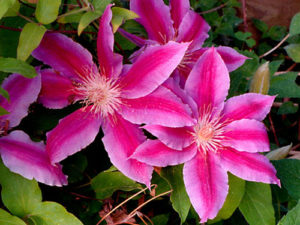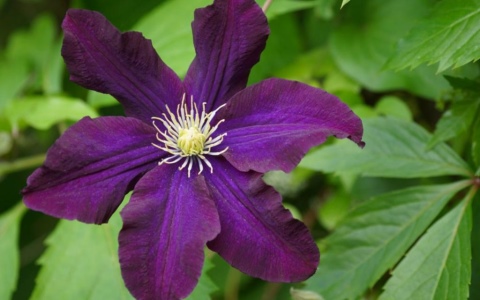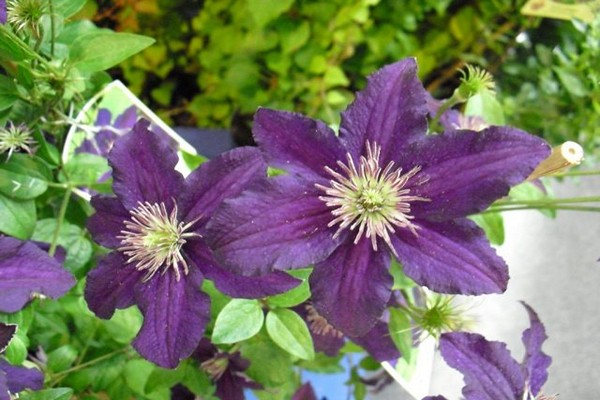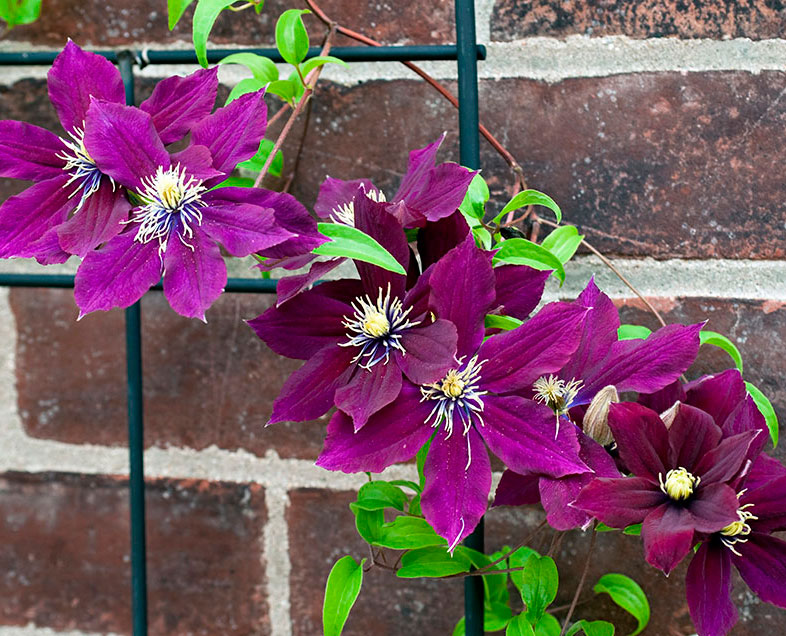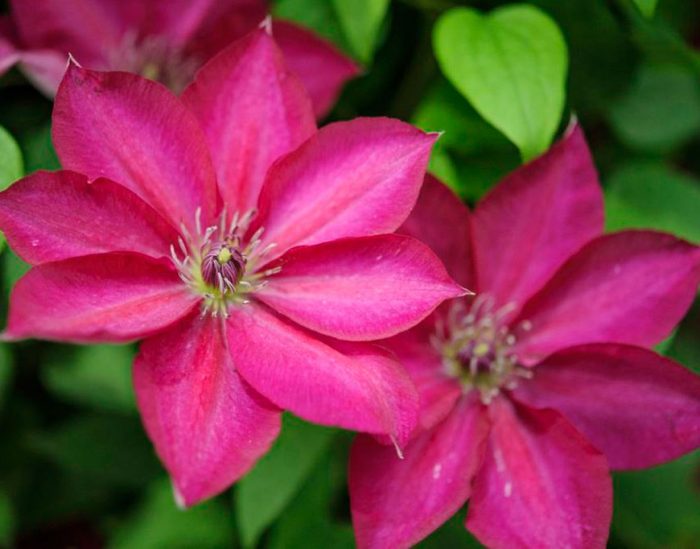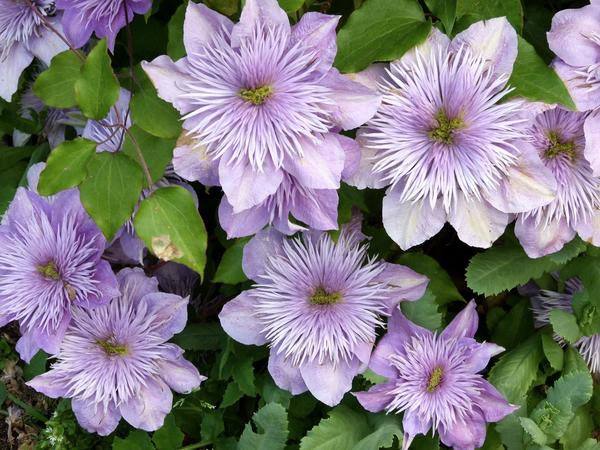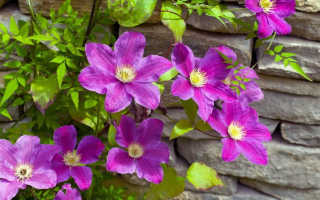How does clematis reproduce?
Liana with small flowers propagates by seeds; this method is not suitable for hybrids with large flowers. They do not retain their varietal characteristics.
Experienced gardeners recommend:
Divide the bush only if it is five or more years old. The lateral part of the roots with stems is cut off with a shovel and planted separately. The bush grows quickly and blooms early
Layering in the spring. The processes that are on the side are pressed against the ground, you can fix this position with brackets. On the shoot, a powerful bud is chosen and covered with a ten-centimeter layer of soil. The branch takes root and for the coming spring it will be possible to separate it and plant it as an independent bush.
Breeding by cuttings - this method is used to get more cuttings. The middle part of the length of adult, strong shoots or green or lignified cuttings are cut. The upper cut should be straight, the lower one at an angle of 45
It should be noted that there are at least two nodes on the cuttings, then they take root in greenhouses, greenhouses, in which the necessary humidity and temperature are constantly maintained
To be vaccinated, but this method is used when propagating very rare and especially valuable varieties of clematis, which cannot be grafted or divided.
3 groups of clematis pruning
According to the type of care, the plants are divided into 3 groups of clematis pruning. The first type of pruning includes clematis, which are not pruned. To the second - clematis, in which, after the first flowering, last year's faded shoots are cut out, and before winter the shoots of the current year are cut to the first leaf or shortened by about a quarter. The third type includes species and varieties in which the shoots are cut off completely or left 15-20 cm above the soil level. This type also includes clematis with herbaceous shoots dying off before winter, which are removed.


So, Zhakman's clematis and violet belong to the third pruning group, and woolly, spreading and flowering clematis belong to the second group. Clematis straight (C. recta) is a herbaceous perennial, and before winter its dying shoots are removed. This is how the main groups of clematis are formed, which can be grown on your site.
Description of the climbing plant clematis
The plant clematis or clematis (Clematis) belongs to the Buttercup family. Homeland - Europe, Asia, North and South America, Africa, Australia
These are perennial herbaceous vines with woody stems and flexible shoots. The height to which clematis rises exceeds 3 m. This is how they manage to grow over the summer. The bush forms of climbing clematis plants do not exceed 1.5 m in height. Liana-like clematis climb onto the supports, clinging to them with leaf stalks.


Leaves are simple or compound, trifoliate or pinnate, ovate, lanceolate or linear-lanceolate, on average 4-5 cm long, up to 10 cm long.
Flowers are collected in inflorescences, rarely single. The color of flowers from white and yellow to purple, blue, carmine-red, with many shades.
Clematis differ in flower size. There are species and varieties with flowers up to 10 - 20 cm in diameter and small-flowered, from 2 to 4 cm. When writing clematis flowers, it should be noted that some species have a delicate, very pleasant aroma.
Now this culture is grown in Siberia, the Far East and even in the North. Clematis are divided into 2 main groups: small-flowered clematis with a flower size of 2 to 5 cm and large-flowered with a flower size up to 15 cm.Small-flowered types of clematis are less known in floriculture, although they are very decorative and at the same time unpretentious, more winter-hardy and drought-resistant than large-flowered ones.










